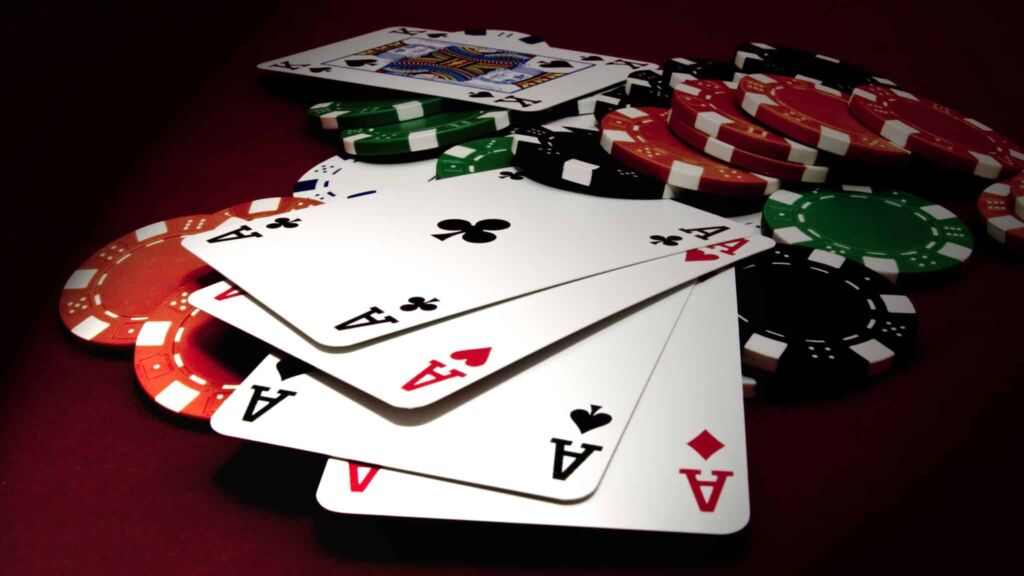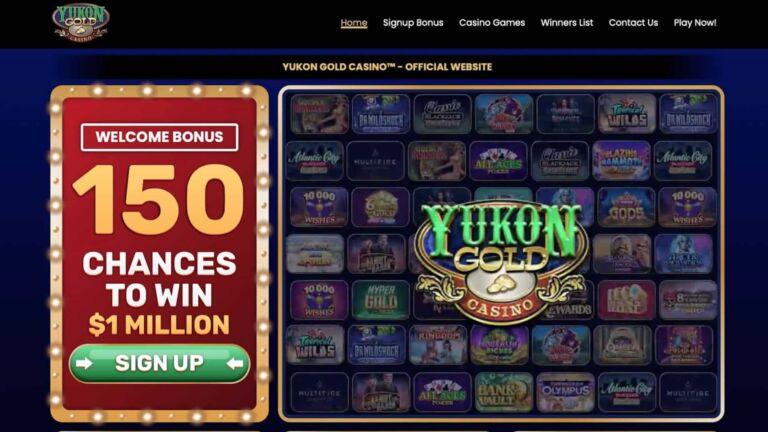For those stepping into poker's intriguing domain, understanding the subtle variations between playing poker online and playing it live is crucial, particularly in terms of how the speed of the game and interaction at the table affect the experience. Online poker, which you can play from the comfort of home, stands in stark contrast to the physical casino environment of live poker, each requiring unique strategies and adaptations, especially regarding game flow and player communication.
Game Pace: A Tale of Two Speeds
One key distinction between online and live poker is the speed at which games are played. This difference in game speed not only influences how many hands players can play per hour but also significantly impacts strategic planning and overall potential earnings.
Online Poker: The Fast Lane
In the realm of online poker, the pace tends to be quick and efficient, thanks to automated processes like card dealing and player actions. A typical nine-player table online might deal around 60 to 75 hands every hour, with a six-player table speeding up to about 100 hands. For those engaging in quick-format games like 'Zoom' poker, the speed can reach up to 200 or 250 hands per hour because players instantly switch tables after folding.
Moreover, the virtual setting of poker allows players to engage in 'multi-tabling,' where seasoned professionals might handle numerous games at once, from two to over twenty tables, significantly boosting their volume of hands and potential winnings each hour. This high-speed environment demands quick thinking and efficient processing of data to manage time effectively across several tables.
Live Poker: The Scenic Route
In sharp contrast, live poker progresses at a much slower rate. The manual handling of cards and chips, along with real-life interactions, means that games at a live poker table often see about 30 hands per hour with experienced dealers. However, this number can decrease further if dealers are inexperienced or players are distracted, sometimes dropping to as few as five or six hands per hour.
The leisurely pace of live poker adds a new dimension to the game. It allows for more deliberate play, better reads on opponents, and opportunities for socialization. The slower tempo demands patience and focus to handle less frequent action, and players accustomed to online play might initially find this pace irritatingly slow. Adjusting to live poker requires a shift in both mindset and strategies to take advantage of its benefits, such as gathering more detailed insights into opponents over a longer timeframe.
Speed Comparison: Quantity of Hands and Strategic Consequences
Numerically speaking, the pace difference between online and live poker is very clear. Online games can offer between double to five times the number of hands per hour compared to their live counterparts. This factor greatly impacts bankroll management, strategies that depend on high volume, and per-hour earnings. Online players often focus on playing many hands to counteract variations, using fast play to exploit statistical advantages over large sets of data.
Conversely, live poker requires a more selective, exploit-focused strategy. Since fewer hands mean each action has more significance, live players work on maximizing their advantage in individual hands by keenly observing opponents and playing psychologically. The slower pace also enriches the game socially, encouraging interactions that are missing from the online version. For those enjoying the social aspect or in-depth psychological play, the slower pace of live poker is a feature, not a flaw.
Communication Dynamics: Digital Silence vs. Real-World Dialogue
Another major distinction between online and live poker is how players communicate, particularly through table talk, which affects both the social and psychological atmosphere of the game.
Online Poker: A Quiet Digital Landscape
In online poker, direct verbal communication typically doesn't happen. Players are isolated, interacting mainly through an online platform, often with only a chat box available for communication, which many players choose not to use. Though some sites offer emojis or pre-set chat options, these do not truly replicate in-person conversation.
Due to anonymity and limited social cues in online poker, the psychological environment diverges quite a bit from live play. Players can't see their opponents' expressions or hear their vocal tones, eliminating traditional physical tells. Consequently, online players must rely on betting patterns, timing nuances, and data to deduce their opponents' hands and strategies. This setting often favors those with a knack for analysis and mathematical strategy, reducing the influence of personal interactions and psychological tactics.
Nevertheless, even in silence, online chat can sometimes be a tool for strategy, though it’s used sparingly. Some players might try to unsettle others using chat, shape how opponents perceive them, or occasionally give away unintended hints. However, experienced online players tend to ignore chat-based distractions, placing greater emphasis on data-oriented decisions.
Live Poker: A Stage for Interaction
Live poker offers a social experience filled with interaction. Table conversation is not just allowed; it is often integral. Discussions, banter, and psychological ploys are common. Players talk to ease tension, gather insights, confront opponents, or simply enjoy socializing.
In live settings, table discussion becomes an aspect of strategy. Seasoned players utilize verbal clues to mislead others, encourage specific moves, or push for certain actions. The combination of effective conversation with keen observation of physical cues provides a wealth of information that is simply unavailable online. By interpreting 'tells' – subtle indications of a player's hand strength or mood – players can make more intelligent decisions.
Additionally, live table talk helps shape the table image, or how other players perceive one's playing style. A player who talks a lot might be considered unpredictable, which can be strategically useful at times. In contrast, reserved players are expected to be more conservative and straightforward. Managing how one is perceived through conversation and demeanor is a critical skill in live poker.
Contrast in Communication: Silent Analysis versus Vibrant Discussion
The differences in table talk between online poker and live play are considerable. Online poker is largely a silent affair, focused on data and functional communication. Live poker, alternatively, is a lively social environment where communication is ongoing and strategically beneficial. This variance significantly impacts the mental aspects of the game.
In online settings, mental strength revolves around staying focused, disciplined, and emotionally stable despite statistical swings and monotonous play. Dealing with emotional setbacks, or 'tilt,' remains a key challenge. In live settings, while managing tilt is no less important, players must also handle complex social interactions, confront assertive personalities, and maintain concentration amid a slower-paced environment. The social nuances and performance elements in live poker are just as important as the solitary focus needed online.
Strategy Adjustments: Adapting to Changes in Pace and Communication
Due to the distinct contrasts in game speed and dynamics at the table, poker players should modify their tactics when switching between playing online and in person in order to achieve optimal results.
Adapting to Game Pace Online
In the swift world of digital poker, making prompt decisions is essential. Competitors need to streamline their actions before the card draw, comprehend betting ranges, and make quick choices after the flop to stay in tune with the fast game pace and efficiently handle various tables. The time-assisting features provided by digital poker platforms, like automated fold and reserve time banks, are vital tools.
Managing one's poker budget carefully is vital for online players because of the increased unpredictability experienced due to the larger number of hands played. Generally, players must have a larger financial cushion relative to their game stakes compared to traditional poker settings. Strategies that focus on high-volume play with marginal profits across many tables are typical. Using online tools like Heads-Up Displays (HUDs) to track opponents in real-time and make informed decisions is a frequently used and highly effective tactic.
Adapting to Game Pace Live
Patience is crucial in traditional poker because of its slower tempo. Players should be ready for stretches without action and resist the temptation to force moves out of boredom. The extended intervals between hands offer an opportunity for thorough evaluation of competitors' behaviors. In these conditions, collecting tells, recognizing player types, and capitalizing on noticeable weaknesses over time is advantageous. Since fewer hands are dealt each hour, choosing hands wisely and waiting for ideal opportunities is crucial to gaining maximum value.
In face-to-face poker, the subtleties of betting amounts are more pronounced. Players can adjust their bet sizes strategically to encourage calls, extract the best possible gains, or craft more convincing bluffs, as in-person contestants may not be as sensitive to ideal betting techniques as online players. Furthermore, keeping personal stamina and concentration in check during lengthy in-person sessions is necessary for maintaining top performance in a more relaxed and interactive setting.
Making use of (or disregarding) conversations at the table in in-person games.
In the realm of in-person poker, engaging in strategic dialogue around the table can offer substantial benefits. Conversational exchanges can help relax tight competitors, provide clues about the strength of their hands, or fabricate a deceptive image. Classic verbal tactics include displaying confidence during a bluff or feigning weakness with a robust hand. By keenly listening to what others vocalize or omit, valuable insights can be uncovered.
Nonetheless, caution is necessary. Misleading dialogue around the table can lead to pitfalls or backfire. Misinterpreting tells or falling for competitors' deliberate false signals can be costly. Some individuals choose to remain quiet and observant, strategically using conversation as a defense to prevent revealing information while still gathering insights from others. Developing a balanced strategy for engaging in table talk, including when and what to say and how to interpret others' behavior, is a hallmark of skilled live poker players.
Player Experience and Preference: Online or Traditional?
Deciding between digital and in-person poker often comes down to personal tastes, individual priorities, and preferred playing techniques. Each setting has its own pros and cons suited to varying types of poker players.
The main allure of online poker is its practicality and ease of access. Participants can engage in games at any time, from any location, without the necessity of going to a physical casino. For those wanting fast action and quick skill enhancement, the rapid tempo of online poker is a significant attraction. The wide assortment of games and wager levels accessible online, ranging from micro-stake cash games to high-stakes competitions, caters to all budgets and skill tiers. Players focusing on honing their game through extensive play and data insights, or those short on time, often favor the online platform. However, some may find the absence of personal interaction and the routine nature of online play to be drawbacks.
Traditional poker delivers a richer, socially engaging, and emotionally charged experience that digital poker fails to recreate. The tangible touch of the chips, the direct face-to-face encounters with other players, and the vibrant casino vibe present a deeper and more captivating poker atmosphere. Those who value human connection, relish interpreting others' actions, and enjoy a more deliberate and thoughtful game process find in-person poker highly appealing. The chance to utilize and detect nonverbal cues, participate in table talk, and cultivate a strategic presence adds several layers of intricacy and excitement to the game. Although in-person poker might not be as convenient and offers fewer hands per hour, for many, it represents the authentic and most engaging form of poker.
New players might find the environment of online poker less intimidating to pick up the game. Lower stakes, readily accessible learning resources, and the option to play without revealing one's identity can help alleviate pressure. Seasoned, dedicated players frequently exploit online poker for extensive gameplay, skill enhancement, and staying in practice, while also finding enjoyment in traditional poker for its social and psychological variations.
Players who cherish interaction and fun often gravitate towards conventional poker, perceiving it as a means of entertainment and social interaction. Those who are fiercely competitive yet appreciate human interaction might split their gaming time between online poker for honing skills and in-person poker for a comprehensive poker experience. Ultimately, the choice of the ‘best’ format relies on what an individual aims to achieve from the game—whether focusing on skills, financial gain, social contact, or entertainment.
Matching Format to Player Type
Final Thoughts: Selecting Your Poker Playing Field
The contrast between online and live poker, especially regarding game speed and communication during play, forms distinct gaming ecosystems. Online poker serves as a fast-paced, analytically driven domain that rewards efficiency and extensive play. In comparison, traditional poker offers a slower, socially engaging setting where interpersonal abilities and psychological insights play a crucial role. Grasping these differences is vital for any poker player aspiring to flourish in their preferred format.
As the world of poker continues to develop, with online platforms regularly innovating and live gaming locations adjusting to current player trends, the core differences in pace and communication are likely to stay as defining traits. For players, the primary task is to recognize their own gaming style, preferences, and objectives, and then select the poker setting that aligns best with those factors. Whether opting for the virtual setting of the online realm or the physical environment of an in-person table, both provide a distinctive and fulfilling poker journey.
♤ This essay was initially published on September 14, 2024, and was revised on February 17, 2025, to ensure its accuracy and relevance.
Refining Strategy with Video Poker Simulations
External Resources:



